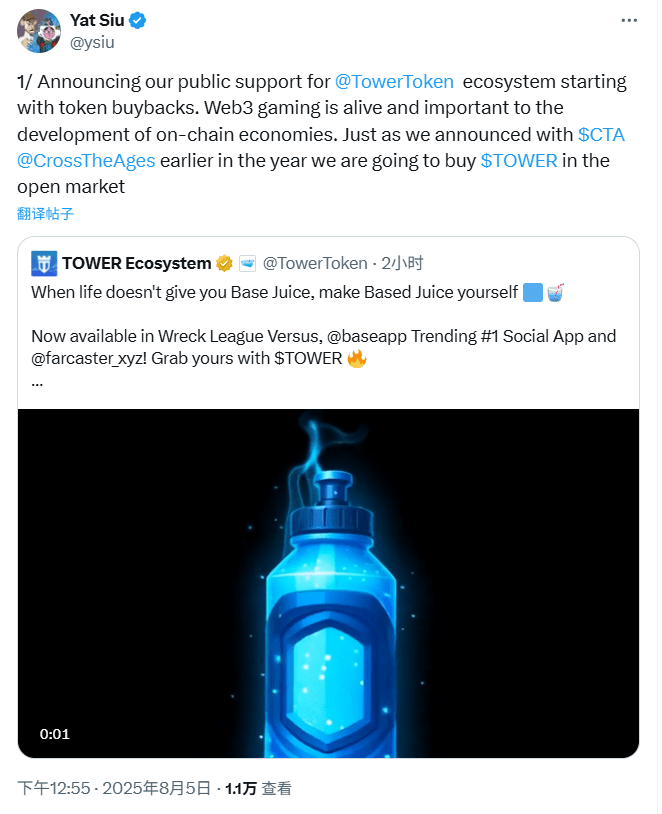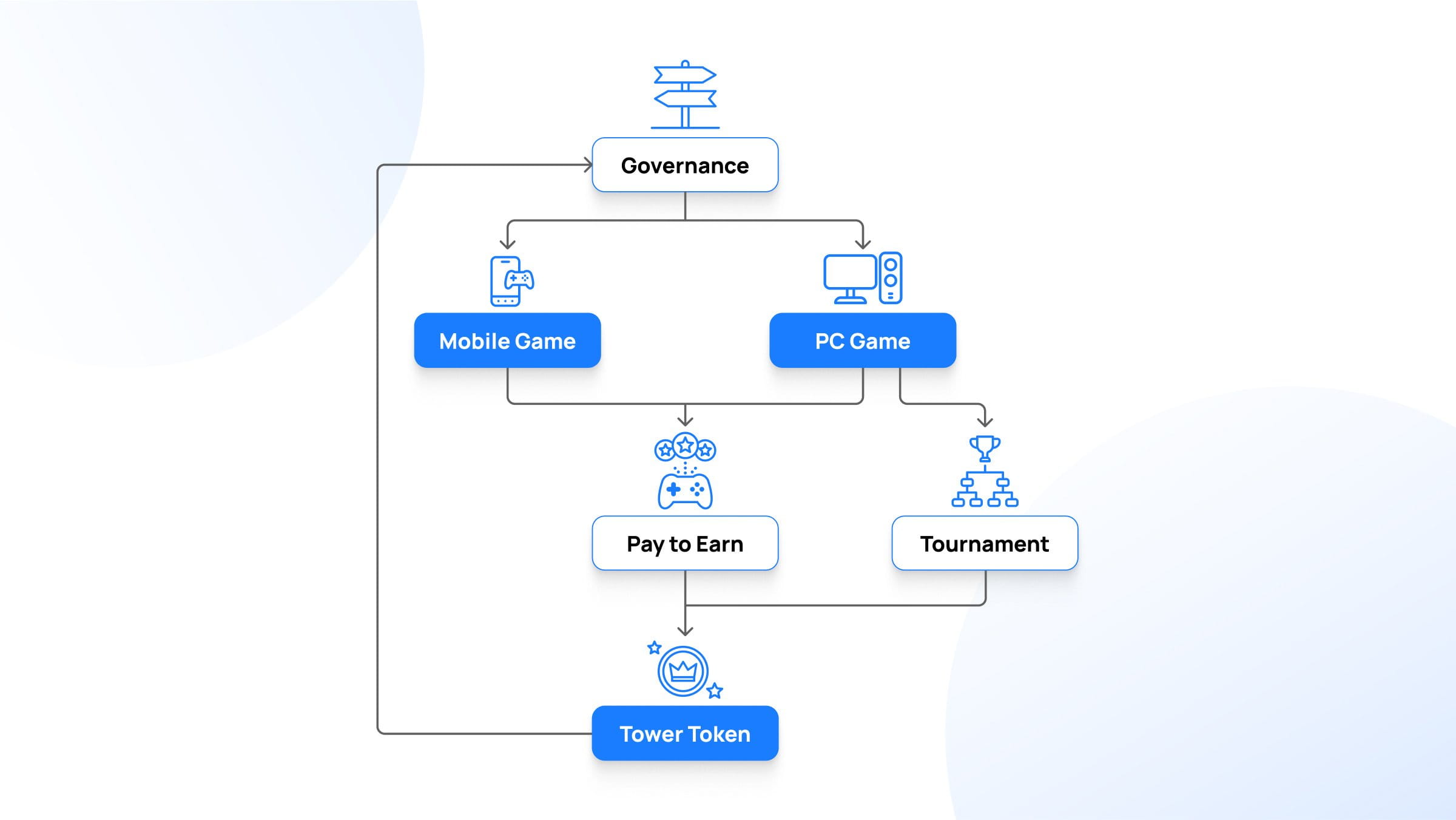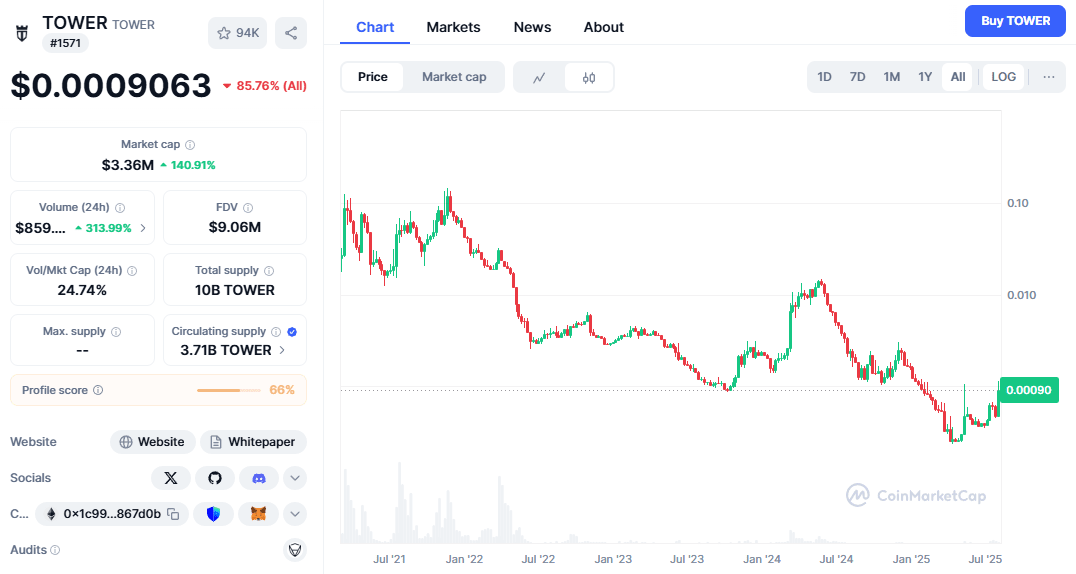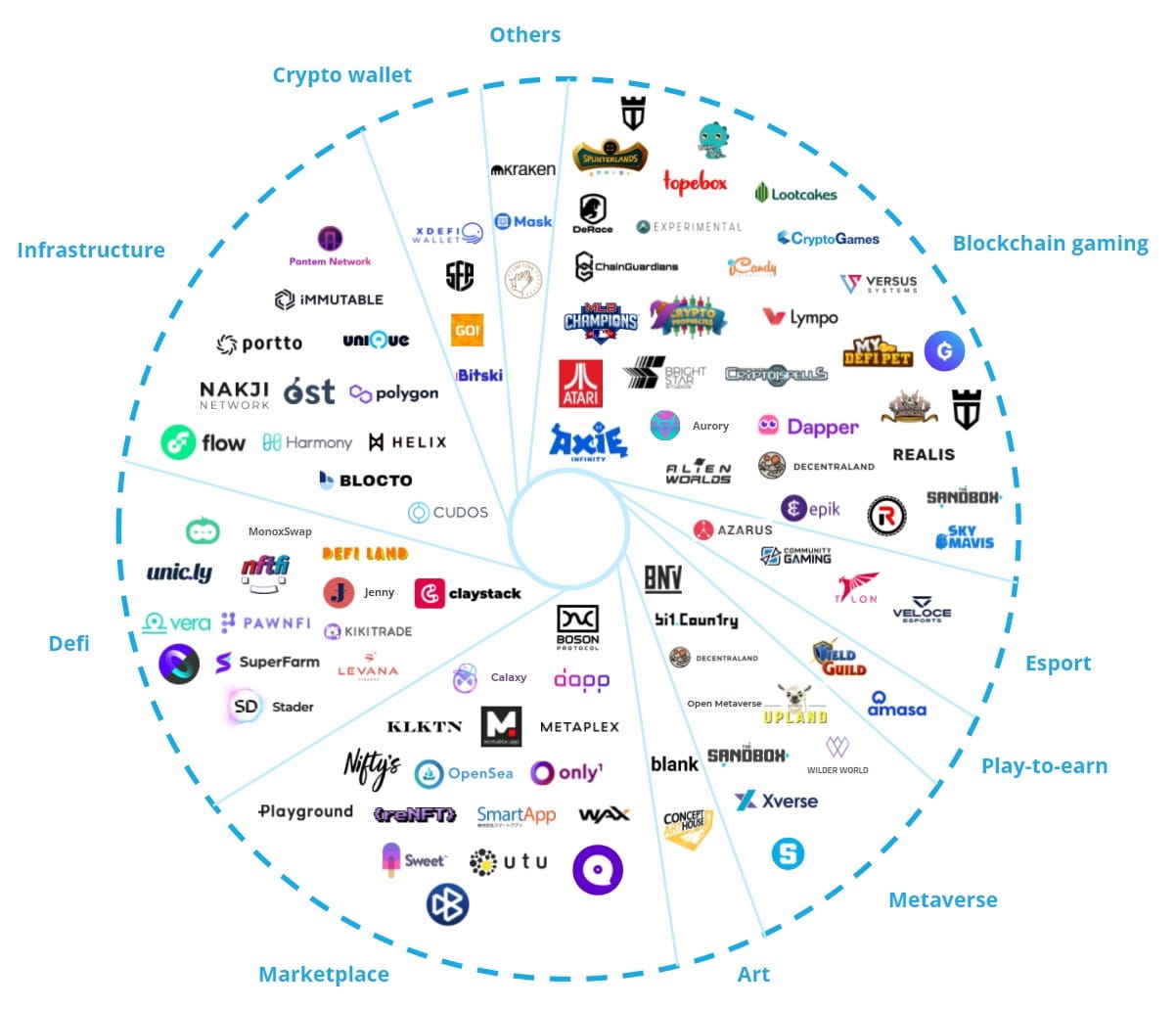Today, on August 5, 2025, a brief statement released by Yat Siu, co-founder and executive chairman of Brands, on the X platform, has sent ripples through the Web3 gaming realm. He announced that Animoca Brands will 'publicly commit to supporting the Tower ecosystem' and will initiate a buyback of TOWER tokens from the secondary market.

The market's reaction is quite subtle: Who is TOWER? A token that seems to linger in the memories of 2021, why is it being dusted off and re-emphasized by Animoca, a Web3 giant, in 2025? Is this merely a routine support for their 'favorite child', or is it a carefully considered strategic signal from Animoca Brands in the backdrop of the GameFi sector, which seems to have missed the last bull market?
The answer is far more complex than a simple token buyback.
Deconstructing TOWER: A Web3 'Living Fossil'
To understand Yat Siu's motivations, we must first turn back the clock. The TOWER token and its ecosystem are a mirror reflecting the evolution of the GameFi sector; it can even be called a 'living fossil'. It was born in early 2021, during the hottest era of the Play-to-Earn (P2E) concept. Animoca Brands' vision was highly forward-looking: to bridge its already market-validated free mobile games (Free-to-Play), such as (Crazy Kings) and (Crazy Defense Heroes), with the token economy of Web3.

The core of this model is not to create a brand new on-chain game solely for the purpose of 'earning', but to 'add' a value layer to an already successful gaming experience. Players in (Crazy Defense Heroes) fight not just for virtual points and badges, but to earn real ERC-20 tokens—TOWER—that circulate on-chain by achieving certain in-game experience (XP) goals each month. These tokens can be exchanged for exclusive game NFTs or participate in special events on their official website, creating a complete 'Play-Earn-Use' economic closed loop.
However, ideals are rich, while reality is stark. With the onset of the 2022 crypto bear market and the collective collapse of the first generation P2E model, TOWER also did not escape. Its token price plummeted from about $0.14, a historical high, down more than 99%, with its market cap shrinking to less than $2 million at one point. Like most GameFi projects of that era, it quickly faded from the market's memory after a brief moment of glory, lying quietly deep in countless users' wallets. The initial token distribution of this project (a total of 10 billion tokens, of which 30% were for the P2E reward pool, 15% for marketing, and 15% held by the team) seemed to be an industry-standard configuration at that time, but in a market with depleted liquidity, all of this felt so powerless.

Motivation Exploration: Yat Siu's 'Standard Operation' and Value Philosophy
If TOWER were just a failed afterthought, then Animoca's actions today would seem irrational. However, the key clue lies in a precedent quoted in Yat Siu's statement—he specifically mentioned 'as we stated regarding CTA earlier this year' in his tweet.
Here, 'CTA' refers to another Web3 game project 'Cross the Ages'. Just two months ago, in June 2025, when Animoca Brands announced a strategic partnership with it, they publicly stated their intention to 'purchase CTA tokens from the secondary market'. The official reason given was that Animoca aims to support those ecosystem partners they believe are 'severely undervalued' and 'committed to developing high-quality Web3 games'.
Applying this logic to TOWER, Yat Siu's intentions become clear. As of the announcement, the total market cap of TOWER tokens was only about $1.4 million. What does this mean? For a token project backed by a mature game series with tens of millions of downloads that is still operating stably, this valuation is disproportionately low. Animoca Brands' entry for a buyback at this time not only incurs minimal costs but also sends a strong signal to the market: we believe it is undervalued, and we trust its intrinsic value.
This is not a whimsical 'pump', but more like a 'standard operation' of Animoca Brands' investment philosophy. Rather than looking externally for new investment targets, it is better to turn back and activate those solid assets within their vast investment landscape that have temporarily gathered dust. This is an extremely shrewd 'portfolio investment management' strategy, merely expressed through open market operations.
The 'Lost Bull Market' of GameFi and Path Reflections
Yat Siu's actions happen at a somewhat awkward time for GameFi. Looking back at the past year of bull markets, DePIN, AI, the Solana ecosystem, and various Memecoins have all performed wealth miracles, but the GameFi sector, aside from a few leading projects that occasionally stirred, has overall performed flatly, seemingly forgotten by mainstream narratives.
The reason lies in the deep 'after-effects' left by the first generation of GameFi. Represented by the early model of Axie Infinity, the design that placed 'Earn' above 'Play' spawned a large number of 'game miners' whose sole purpose was to grind for gold, and its spiraling token model proved unsustainable during market downturns. The fragility of this model has led to a trust deficit in GameFi across the industry. Both investors and players are asking: are we really 'playing a game', or are we 'playing a Ponzi'?
The model of TOWER, from today's perspective, offers a different approach to problem-solving. Its game itself—(Crazy Defense Heroes)—is primarily a fun, quality-driven F2P game that attracts and retains players. The TOWER token is an added layer of reward, rather than the cornerstone upon which the game is built. This 'Play-and-Earn' concept, rather than 'Play-to-Earn', is increasingly seen as a healthier and more sustainable direction for development.
Gala Games is also reflecting and iterating. In the face of token inflation pressure, Gala decisively executed a large-scale token burn in 2023 and shifted to its self-developed GalaChain, attempting to fundamentally optimize its economic ecology. These cases show that the GameFi sector has not vanished; it is undergoing a profound and necessary collective reflection and internal reconstruction.
From 'Incremental Expansion' to 'Stock Activation': Animoca's New Chess Game
When all the clues are connected, a clear picture of Animoca Brands' future strategy emerges. As one of the largest investment empires in the Web3 space, Animoca owns hundreds of investment projects and subsidiaries. After a phase of rapid land-grabbing and breadth-seeking incremental expansion in previous years, its strategic focus seems to be quietly shifting.

The new chess game is 'stock activation'—that is, to deeply explore and activate the latent value within their vast investment portfolio. The TOWER project is undoubtedly a perfect 'pawn' in this new chess game. It has a successful game IP, a large existing player base, a fully functional token system, and a price that is extremely undervalued by the market. Initiating a buyback is like a lever that, with minimal cost, stirs market attention, reassures the existing community, and sends a message to all other projects within the ecosystem: the parent company will provide real support at critical moments. This is akin to a precise 'internal targeted stimulus plan.'
Interestingly, in our research on the TOWER ecosystem, we did not find a clear long-term development roadmap. This seems somewhat alternative in the crypto world, which often pursues 'pie-in-the-sky' capabilities. But this may also be part of Animoca's new strategy: bidding farewell to rigid, grand long-term commitments and replacing them with more agile, opportunistic tactical interventions. A token buyback, a collaboration with new partners, a meticulously designed in-game event—these pragmatic measures may bring more tangible value than a flashy PDF document.
In summary, Yat Siu's statement about TOWER signifies far more than a simple financial maneuver. It is a profound response to the current development dilemmas of GameFi, a necessary reflection as the market matures from fervor to maturity, and a significant move made by Animoca Brands, a Web3 player, at a crucial mid-game phase.
GameFi may have missed the last grand ball, but leaders like Animoca Brands clearly did not abandon ship. What they are doing is returning to the engine room, carefully inspecting every engine part, re-polishing those dusty 'heirlooms', and preparing for the next distinctly different journey. This new journey will no longer rely on speculative bubbles but will be built on sustainable economic models and real value validated by the market. Yat Siu's signal is not just about the future of TOWER; it quietly and firmly tells the entire industry: the game is far from over.
